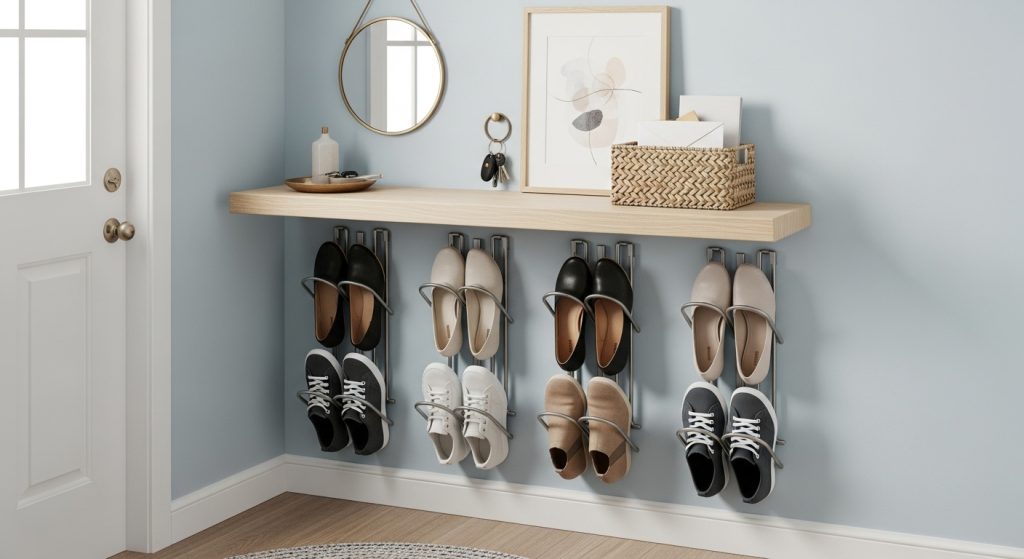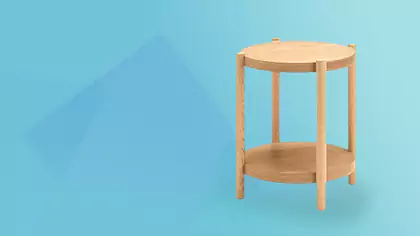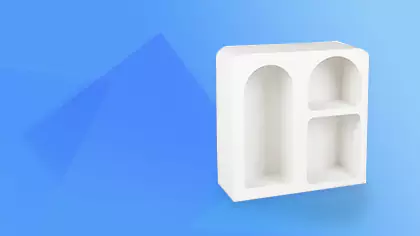These creative shoe storage ideas for tiny entryways provide a definitive guide to conquering clutter in the most challenging of spaces. A tiny entryway often lacks closets or ample floor space, making shoe storage a persistent problem. Piles of footwear by the door create a chaotic first impression and can be a tripping hazard. The solution lies in smart, space-saving strategies that maximize every available inch.

This professional guide explores innovative and practical ideas. It covers vertical solutions, ultra-slim designs, multi-functional furniture, and clever organizational tricks. It will empower you to transform your cramped entryway into a surprisingly organized, functional, and stylish threshold.
What is the Core Challenge of Shoe Storage in Tiny Entryways?
The core challenge is finding adequate storage capacity within severely limited square footage without obstructing traffic flow. Tiny entryways often lack dedicated closets. Floor space is minimal, and walls may be interrupted by doors or architectural features. The goal is to implement effective shoe storage ideas that are both physically compact and visually unobtrusive, maintaining a sense of openness in the small space.
This requires moving beyond traditional, bulky shoe racks or cabinets. It demands creative thinking, focusing on vertical space, slim profiles, and multi-functional designs. The aim is to create designated homes for footwear that prevent clutter from accumulating at the doorway. A well-organized entryway, no matter how small, sets a positive tone for the entire home. The impact of organization on perceived space is significant.
Why is Vertical Storage the Key Solution?
Vertical storage is the key solution because it utilizes the often-underused height of a wall, rather than consuming precious floor space. By thinking upward instead of outward, you can store a surprising number of shoes within a very small footprint. This approach keeps the walkway clear and draws the eye upward, creating an illusion of greater spaciousness.
How Do Wall-Mounted Shoe Cabinets Save Floor Space?
Wall-mounted shoe cabinets are an exceptional solution. These typically shallow cabinets attach directly to the wall, floating above the floor. This keeps the floor area completely clear, making the entryway feel larger and easier to clean. Many feature slim, tilt-out drawers that store shoes vertically or at an angle, maximizing storage within a minimal depth. Our guide to wall-mounted shoe cabinet ideas to save floor space explores various styles, from minimalist designs to options with integrated mirrors. Secure mounting into wall studs or using heavy-duty anchors is crucial.
What Are the Benefits of Over-the-Door Shoe Organizers?
Over-the-door shoe organizers are a classic, budget-friendly solution, especially for renters or those needing temporary storage. These typically feature fabric or plastic pockets that hang over the back of an entryway closet door or even the main entry door (if space allows).
- Pros: Require zero floor or wall space, very affordable, easy to install and remove.
- Cons: Shoes are visible (can look cluttered), may not accommodate bulky shoes or boots well, can prevent a door from closing properly if too thick. They are best suited for flatter shoes like sandals, sneakers, and children’s shoes.
How Can Tall, Slim Shoe Towers Maximize Corners?
Tall, slim shoe towers or racks are designed to fit into narrow spaces or corners. These vertical units often feature multiple tiers of shelves or cubbies stacked high. Their small footprint makes them ideal for tucking beside a door or into an unused corner. Look for designs that are stable and consider securing taller units to the wall to prevent tipping, especially in households with children or pets. Some models rotate for easier access to shoes stored at the back.
What Ultra-Slim Cabinet Designs Work Best?
Ultra-slim cabinet designs are specifically engineered for the challenges of narrow hallways and tiny entryways. These cabinets typically have a depth of only 6-10 inches, allowing them to sit almost flush against the wall while still providing significant storage capacity through clever internal mechanisms.
How Do Tilt-Out Shoe Cabinets Maximize Storage in Minimal Depth?
Tilt-out shoe cabinets are a brilliant innovation. They look like a shallow console table or cabinet. However, the “drawers” tilt open from the top, revealing angled compartments where shoes are stored vertically or nearly vertically. This allows the cabinet to have an incredibly shallow profile while still holding multiple pairs of shoes per drawer. They offer completely concealed storage, maintaining a clean, uncluttered look. The tilt-out mechanism is key to their space-saving magic.
What Are Super-Shallow Console-Style Shoe Cabinets?
Some modern shoe cabinets are designed to mimic the look of a slim console table. They might feature very shallow shelves behind doors or utilize the same tilt-out mechanism. These pieces offer a stylish surface on top for placing keys or mail, functioning like an entryway Console table, while discreetly hiding shoes below. This multi-functionality is perfect for small spaces.
How to Choose Materials for Visual Lightness?
When choosing an ultra-slim cabinet, consider materials that enhance visual lightness.
- White or Light Colors: Reflect light and make the cabinet feel less imposing.
- Mirrored Doors: Can make the cabinet almost disappear visually while also making the entryway feel larger.
- Simple Hardware: Handleless designs or very minimal hardware contribute to a sleek, unobtrusive look. Avoid dark, heavy wood finishes or bulky hardware in very tight spaces.
How Can Multi-functional Furniture Hide Shoe Storage?
Multi-functional furniture is a cornerstone of small-space living. Pieces that combine shoe storage with other essential entryway functions, like seating or surface space, are incredibly efficient. They reduce the number of individual furniture items needed, freeing up valuable floor space and reducing visual clutter. Our guide to multifunctional entryway furniture ideas with storage delves into these smart solutions.
Why Are Entryway Benches with Storage So Popular?
Entryway benches with integrated shoe storage are incredibly popular because they address two key needs simultaneously: a place to sit while putting on or taking off shoes, and a place to store those shoes. Common designs include:
- Open Cubbies: Simple slots underneath the bench seat provide easy access for frequently worn pairs.
- Drawers or Baskets: Concealed storage keeps shoes hidden and the look tidier.
- Lift-Top Storage: The bench seat lifts to reveal a hidden storage compartment inside. These benches provide immense practicality within a single footprint. The market for storage benches reflects their high utility value.
Can Ottomans with Storage Double as Shoe Hideaways?
Yes, storage ottomans can be a surprisingly effective and stylish shoe hideaway, especially in entryways that open directly into a living area. Choose a sturdy ottoman with a lift-off or hinged lid. The interior compartment can hold several pairs of shoes, keeping them completely out of sight. The ottoman also provides extra seating or a surface for bags. Look for durable, easy-to-clean upholstery.
What About Console Tables with Integrated Shoe Storage?
Some console tables are specifically designed with lower shelves perfectly sized for shoes or include drawers deep enough to hold footwear. This combines the traditional entryway landing strip function with discreet shoe storage. Look for designs where the shoe storage is subtle and doesn’t detract from the table’s overall elegance.
How to Find Hidden and Concealed Shoe Storage Opportunities?
Sometimes the best storage solutions involve utilizing existing nooks, crannies, or adjacent spaces. Thinking creatively about “dead space” can reveal surprisingly effective hidden storage opportunities, keeping shoes completely out of the main entryway flow.
How Can Under-Stair Space Be Utilized?
The often-awkward triangular space under a staircase is prime real estate for built-in shoe storage. Custom drawers or shelves can be designed to fit perfectly into this area, creating a highly efficient and completely concealed storage solution. This often requires custom carpentry but can yield a huge amount of storage in otherwise wasted space.
What is the Strategy of Using an Entry Closet?
If your tiny entryway has even a small coat closet nearby, dedicate the floor space or lower shelves entirely to shoe storage. Use stackable shoe organizers, clear shoe boxes, or simple shelves to maximize the vertical space within the closet. Keeping shoes inside the closet, rather than in the open entryway, is the most effective way to maintain a clutter-free look.
Can You Create Built-in Storage Niches?
For homeowners undertaking renovations, creating shallow, built-in storage niches in the wall can be an elegant solution. These recessed shelves or cabinets sit flush with the wall, providing storage without projecting into the hallway space at all. This requires more significant construction but offers the ultimate seamless, space-saving result.
What Are Creative DIY and Repurposed Shoe Storage Ideas?
For those on a budget or who enjoy a unique, handcrafted look, DIY and repurposed solutions offer endless creative possibilities. These ideas often utilize simple materials in clever ways to create functional and stylish shoe storage.
How Can Crates and Baskets Be Used Creatively?
Wooden crates and sturdy woven baskets are versatile building blocks for DIY shoe storage.
- Stacked Crates: Simple wooden crates can be stacked horizontally or vertically and secured together to create rustic cubbies for shoes. They can be left natural, stained, or painted.
- Wall-Mounted Baskets: Sturdy, flat-backed baskets can be mounted directly to the wall to create individual shoe pockets. This adds texture and works well for children’s shoes or sandals.
How to Build Simple Vertical Shoe Racks?
Simple vertical shoe racks can be easily constructed from wood or even PVC pipes. A ladder-style rack leans against the wall, providing angled shelves for shoes while taking up minimal floor space. A simple set of narrow wooden shelves mounted vertically can also be effective. Ensure any tall, freestanding DIY rack is securely anchored to the wall.
Can Wall-Mounted Pegs or Hooks Work for Shoes?
Wall-mounted pegs or sturdy hooks can work for certain types of shoes, particularly those with heel straps (like sandals or some athletic shoes) or sturdy pull loops (like boots). This method keeps shoes completely off the floor and creates a very minimalist look. However, it is not suitable for all shoe types and requires careful placement to avoid looking messy.
How Do You Maximize Space Inside Your Chosen Solution?
Once you have chosen your primary storage solution, implementing smart organizational strategies within that space is key to maximizing its capacity and maintaining order. These shoe storage ideas focus on efficiency and visibility.
How Do Shoe Stackers Double Your Shelf Space?
Shoe stackers are simple plastic devices that allow you to store one shoe directly on top of the other within a single slot. This effectively doubles the storage capacity of shelves or cubbies, particularly for flatter shoes like sneakers, flats, or sandals. They are an inexpensive and highly effective space multiplier.
Why is Seasonal Rotation Essential in Small Spaces?
Seasonal rotation is essential. Store out-of-season footwear (e.g., bulky winter boots during summer) elsewhere, such as in under-bed storage bins or at the back of a closet. This frees up valuable space in your entryway cabinet for the shoes you are currently wearing. This simple habit prevents the entryway storage from becoming overloaded.
What is the Importance of Regular Decluttering?
Regular decluttering is non-negotiable for maintaining an organized system, especially in a small space. Shoes that are worn out, uncomfortable, or no longer fit your style should be removed promptly. Aim to purge unwanted shoes at least twice a year. An organized space relies on having only what you actually use and need. Our guide on how to organize shoes in small spaces without clutter emphasizes this crucial step.
Conclusion
These creative shoe storage ideas for tiny entryways prove that even the smallest space can be transformed into an organized and welcoming threshold. By prioritizing vertical space, choosing slim-profile or wall-mounted designs, embracing multi-functional furniture, and implementing smart internal organization, you can effectively conquer shoe clutter. The key is a combination of creative thinking and disciplined habits. With the right approach, your tiny entryway can make a big, positive first impression – stylish, serene, and blissfully shoe-free. For a broader look at entryway furniture, our overview of shoe cabinet organization & design is a valuable resource.











